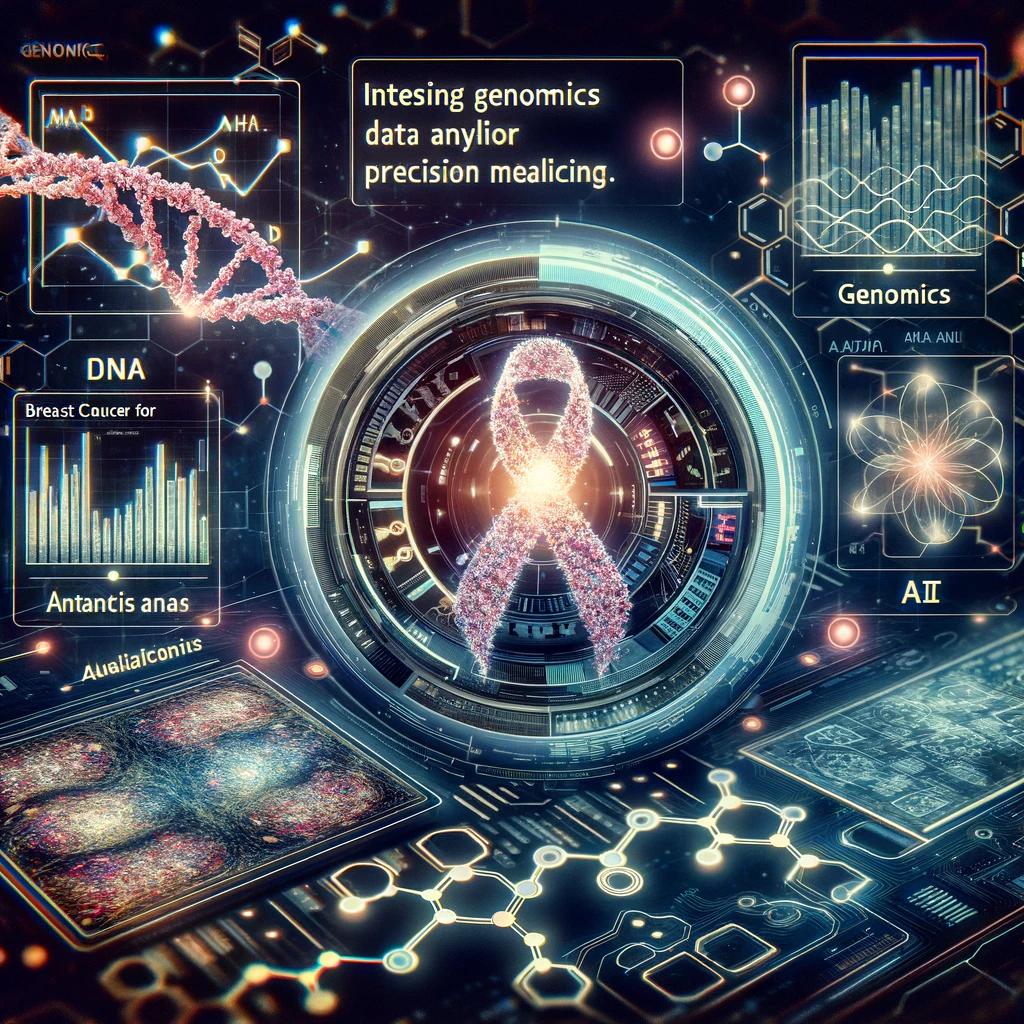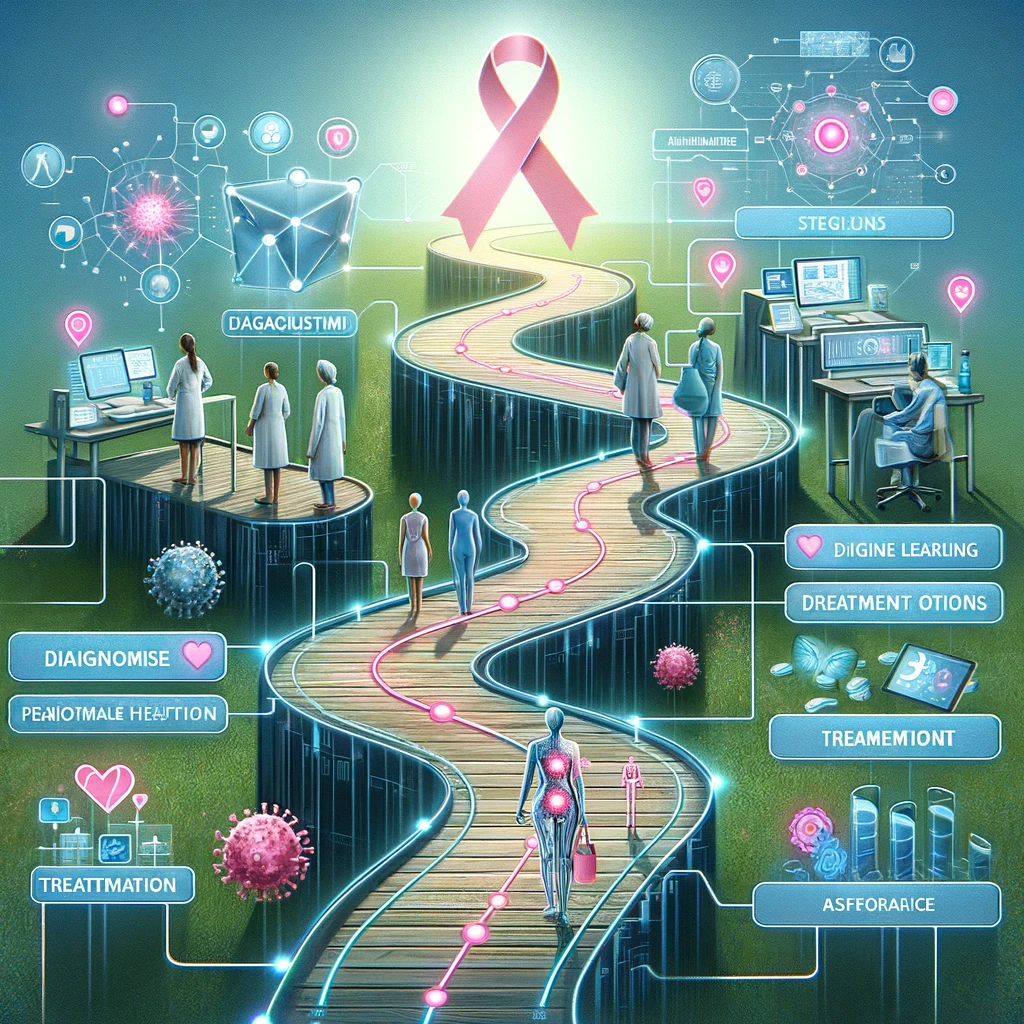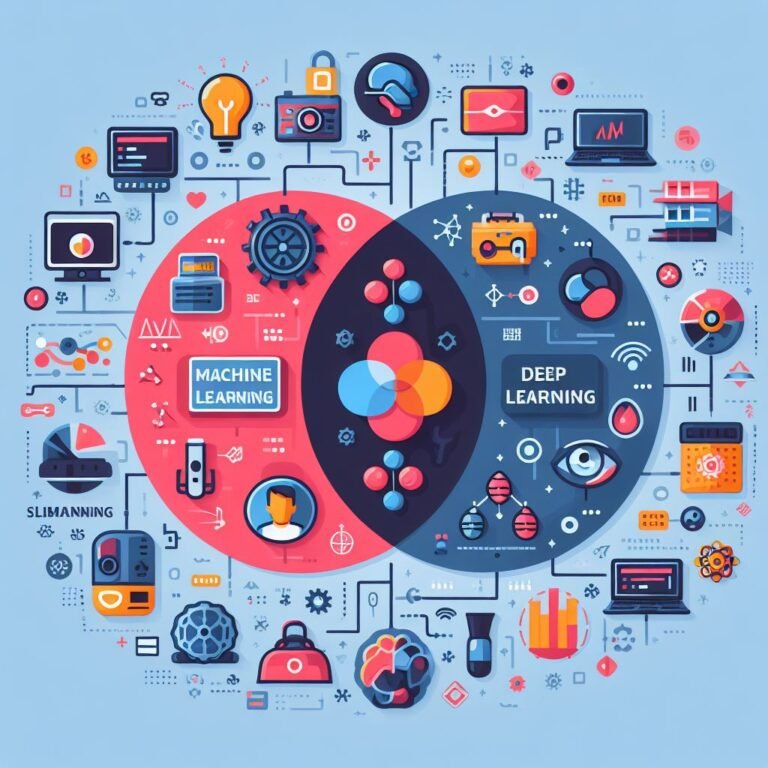Breast Cancer Prediction Using Machine Learning
Breast cancer is one of the most prevalent forms of cancer affecting women globally. Early detection and accurate diagnosis play a crucial role in improving survival rates and treatment outcomes. In recent years, machine learning has emerged as a powerful tool in the field of healthcare, offering new possibilities for breast cancer prediction and early detection. This article explores the intersection of machine learning and healthcare, delving into the mechanics of breast cancer prediction using machine learning, the role of data, and the integration of genomics for precision medicine. Additionally, it examines case studies, technological innovations, challenges, ethical considerations, patient engagement, data privacy concerns, global perspectives, the transition from research to real-world applications, interdisciplinary collaboration, regulatory considerations, and the future of breast cancer prediction with machine learning.
The Intersection of Machine Learning and Healthcare
Machine learning, a subset of artificial intelligence (AI), has revolutionized various industries, and healthcare is no exception. By leveraging vast amounts of data and sophisticated algorithms, machine learning models can identify patterns, make predictions, and assist in decision-making processes. In the context of breast cancer, machine learning algorithms can analyze medical images, patient data, and genomic information to aid in early detection, risk assessment, and personalized treatment planning.
The Mechanics of Breast Cancer Prediction Using Machine Learning
The process of breast cancer prediction using machine learning involves several key steps:
- Data Collection: The first step is to gather relevant data from various sources, such as mammograms, patient medical records, family histories, and genomic data.
- Data Preprocessing: The collected data often requires cleaning, normalization, and formatting to ensure consistency and compatibility with the machine learning algorithms.
- Feature Selection: Relevant features or variables that may influence breast cancer risk are identified and selected for inclusion in the machine learning model.
- Model Training: The selected machine learning algorithm is trained on a portion of the data, allowing it to learn patterns and relationships between the features and the target variable (breast cancer risk or diagnosis).
- Model Evaluation: The trained model is evaluated on a separate portion of the data to assess its performance, accuracy, and generalization capabilities.
- Model Deployment: Once validated, the trained model can be deployed in clinical settings to assist healthcare professionals in breast cancer prediction and risk assessment.
Understanding Machine Learning Algorithms for Cancer Prediction
Various machine learning algorithms can be employed for breast cancer prediction, each with its own strengths and limitations. Some commonly used algorithms include:
- Logistic Regression: A simple yet powerful algorithm that models the probability of a binary outcome (e.g., presence or absence of breast cancer) based on input features.
- Support Vector Machines (SVMs): A robust algorithm that constructs hyperplanes to separate data points into different classes, making it suitable for classification tasks.
- Decision Trees and Random Forests: Tree-based algorithms that recursively split the data based on feature values, providing interpretable models and handling non-linear relationships.
- Neural Networks: Inspired by the human brain, neural networks can learn complex patterns and relationships in data, making them powerful for tasks like image analysis and risk prediction.
The choice of algorithm depends on factors such as the nature of the data, the desired level of interpretability, and the specific requirements of the problem at hand.
Data’s Role in Machine Learning: Quality, Quantity, and Ethics
The success of machine learning models in breast cancer prediction heavily relies on the quality and quantity of the data used for training and validation. High-quality data is essential for accurate predictions, while a large and diverse dataset can improve the model’s generalization capabilities.
Additionally, ethical considerations surrounding data collection, usage, and privacy must be addressed. Ensuring patient consent, maintaining data confidentiality, and adhering to data protection regulations are crucial aspects of responsible machine learning in healthcare.
Integrating Genomics and Machine Learning for Precision Medicine
Breast cancer is a complex disease with various genetic and molecular factors influencing its development and progression. By integrating genomic data with machine learning algorithms, researchers and healthcare professionals can unlock the potential of precision medicine. Genomic data, such as gene expression profiles and genetic mutations, can provide valuable insights into tumor behavior, treatment response, and personalized therapy selection.
Case Studies and Success Stories
Several case studies and success stories highlight the potential of machine learning in breast cancer prediction and early detection. For example, researchers at [Institution/Company] developed a machine learning model that achieved [X%] accuracy in detecting breast cancer from mammograms, outperforming traditional screening methods. Another study by [Institution/Company] utilized machine learning algorithms to analyze genomic data and predict the risk of breast cancer recurrence, enabling more personalized treatment plans.
Technological Innovations Enhancing Machine Learning Capabilities
Advancements in technology have played a significant role in enhancing the capabilities of machine learning in breast cancer prediction. Some notable innovations include:
- High-performance computing: The availability of powerful computing resources, such as graphics processing units (GPUs) and cloud computing, has accelerated the training and deployment of complex machine learning models.
- Deep learning: A subfield of machine learning inspired by the structure and function of the human brain, deep learning algorithms have shown remarkable performance in tasks like image recognition and natural language processing, making them valuable for analyzing medical images and patient data.
- Explainable AI (XAI): As machine learning models become more complex, there is a growing need for explainable AI techniques that provide insights into the decision-making process, increasing transparency and trust in the healthcare domain.
Challenges in Breast Cancer Prediction with Machine Learning
While machine learning offers promising solutions for breast cancer prediction, several challenges must be addressed:
- Data quality and availability: Obtaining high-quality, diverse, and representative data can be a significant challenge, as it requires collaborations among healthcare institutions, data sharing agreements, and robust data collection methods.
- Model interpretability: Some machine learning algorithms, particularly deep learning models, can be perceived as “black boxes,” making it difficult to understand the reasoning behind their predictions. Explainable AI techniques are crucial for building trust and enabling informed decision-making in healthcare.
- Bias and fairness: Machine learning models can inherit biases present in the training data, potentially leading to unfair or discriminatory predictions. Addressing these biases and ensuring fairness is essential for ethical and responsible deployment of machine learning in healthcare.
- Regulatory and legal compliance: The integration of machine learning into clinical practice requires adherence to relevant regulations, data protection laws, and ethical guidelines, which can vary across different regions and jurisdictions.
Ethical Considerations and Machine Learning in Healthcare
The use of machine learning in healthcare, including breast cancer prediction, raises important ethical considerations:
- Privacy and data protection: Ensuring the privacy and confidentiality of patient data is of utmost importance, as machine learning models often rely on sensitive personal and medical information.
- Bias and fairness: As mentioned earlier, addressing biases and ensuring fair and non-discriminatory predictions is crucial to maintain trust and prevent potential harm.
- Transparency and accountability: Healthcare professionals and patients should have access to clear explanations of how machine learning models arrive at their predictions, enabling informed decision-making and accountability.
- Human oversight and control: While machine learning can assist in decision-making, human expertise and oversight should remain central to the healthcare process, particularly in critical situations.
The Role of Patient Engagement and Education
Effective patient engagement and education are essential for the successful integration of machine learning in breast cancer prediction and healthcare. Patients should be informed about the use of machine learning technologies, their potential benefits and limitations, and the measures taken to protect their privacy and ensure ethical practices. Clear communication and consent processes can foster trust and facilitate informed decision-making.
Overcoming Data Privacy Concerns in Healthcare
Data privacy is a paramount concern in the healthcare industry, and the use of machine learning exacerbates these concerns due to the large volumes of sensitive data required for training and validation. To address data privacy concerns, various strategies can be employed:
- De-identification and anonymization: Removing or obfuscating personally identifiable information from patient data while preserving the relevant medical information.
- Secure data storage and transmission: Implementing robust cybersecurity measures, such as encryption and access controls, to protect sensitive data from unauthorized access or breaches.
- Differential privacy: A mathematical framework that introduces controlled noise or perturbations to the data, ensuring individual privacy while preserving the utility of the data for machine learning purposes.
- Federated learning: A decentralized approach where machine learning models are trained on local data across multiple devices or institutions, without the need for centralized data collection.
By adopting these strategies and adhering to data protection regulations, healthcare institutions can leverage the power of machine learning while maintaining patient privacy and trust.
Global Perspectives on Machine Learning in Breast Cancer Prediction
The application of machine learning in breast cancer prediction has garnered global attention, with researchers and healthcare professionals worldwide exploring its potential. Collaborative efforts and knowledge-sharing across borders can accelerate the development and adoption of effective machine learning solutions. However, it is important to recognize the disparities in access to technology, data resources, and healthcare infrastructure among different regions and countries. Efforts should be made to ensure equitable access to these advanced technologies, bridging the digital divide and promoting inclusive healthcare solutions globally.
Bridging the Gap: From Research to Real-World Application
While significant progress has been made in the field of machine learning for breast cancer prediction, translating research findings into real-world clinical applications remains a challenge. Bridging this gap requires:
- Robust validation and clinical studies: Rigorous validation and clinical trials are necessary to evaluate the performance, safety, and effectiveness of machine learning models in real-world settings.
- Integration into clinical workflows: Seamless integration of machine learning technologies into existing clinical workflows and electronic health record systems is crucial for widespread adoption and ease of use.
- Interdisciplinary collaboration: Close collaboration between researchers, healthcare professionals, data scientists, and software engineers is essential to ensure the successful development, deployment, and maintenance of machine learning solutions.
- Stakeholder engagement: Engaging stakeholders, including healthcare providers, patients, policymakers, and regulatory bodies, can facilitate the acceptance and adoption of machine learning technologies in clinical practice.
Interdisciplinary Collaboration for Advanced Solutions
Addressing the complex challenges of breast cancer prediction and leveraging the full potential of machine learning requires interdisciplinary collaboration. This involves:
- Medical experts: Oncologists, radiologists, and healthcare professionals provide domain expertise, clinical insights, and guidance to ensure the relevance and practical applicability of machine learning solutions.
- Data scientists and machine learning experts: Responsible for developing, training, and optimizing machine learning models, as well as ensuring data quality, handling, and privacy.
- Computer scientists and software engineers: Responsible for building the necessary infrastructure, integrating machine learning models into clinical systems, and ensuring user-friendly interfaces and seamless workflows.
- Ethicists and policymakers: Provide guidance on ethical considerations, regulatory compliance, and policy frameworks to ensure responsible and equitable implementation of machine learning in healthcare.
By fostering interdisciplinary collaborations, diverse perspectives and expertise can be combined to drive innovation and develop advanced solutions for breast cancer prediction and management.
Regulatory and Policy Considerations in Healthcare AI
The integration of machine learning and AI in healthcare requires a robust regulatory and policy framework to ensure patient safety, data privacy, and ethical practices. Regulatory bodies, such as the U.S. Food and Drug Administration (FDA) and the European Medicines Agency (EMA), are actively developing guidelines and frameworks for the evaluation and approval of AI-based medical devices and software.
Key considerations include:
- Validation and performance testing: Rigorous validation and testing procedures must be established to evaluate the accuracy, reliability, and safety of machine learning models in healthcare applications.
- Data governance and privacy: Regulations and policies should address data governance, privacy, and security concerns, ensuring the responsible and ethical use of patient data for machine learning purposes.
- Transparency and explainability: Guidelines should promote transparency and explainability in machine learning models, enabling healthcare professionals and patients to understand the decision-making process and ensure accountability.
- Continuous monitoring and oversight: Mechanisms for continuous monitoring and oversight of machine learning systems should be in place to ensure their safe and effective operation over time.
International collaborations and harmonization of regulations can facilitate the global adoption and deployment of machine learning solutions in breast cancer prediction and healthcare.
The Future of Breast Cancer Prediction and Machine Learning
The future of breast cancer prediction and machine learning holds great promise, with ongoing research and technological advancements paving the way for more accurate, personalized, and efficient solutions. Some potential future developments include:
- Multimodal data integration: Combining various data sources, such as medical images, genomics, electronic health records, and wearable device data, to build more comprehensive and accurate machine learning models.
- Federated learning and privacy-preserving techniques: Decentralized approaches like federated learning and advanced privacy-preserving techniques will enable collaborative model training while maintaining data privacy and security.
- Explainable AI and human-AI collaboration: Explainable AI techniques will enhance transparency and interpretability, fostering trust and enabling effective human-AI collaboration in healthcare decision-making.
- Continuous learning and adaptation: Machine learning models will have the capability to continuously learn and adapt to new data, evolving medical knowledge, and changing patient populations, ensuring their long-term relevance and effectiveness.
Emphasizing the Importance of Continuous Learning and Adaptation in AI
As medical knowledge and healthcare practices evolve, it is crucial for machine learning models to adapt and continuously learn from new data and insights. Techniques such as transfer learning, incremental learning, and online learning can enable machine learning models to update their knowledge and refine their predictions as more data becomes available.
Additionally, continuous monitoring and evaluation of model performance are essential to ensure that predictions remain accurate and relevant over time. Regular retraining and fine-tuning of models with the latest data can help maintain their effectiveness and prevent potential biases or performance degradation.
Conclusion
The integration of machine learning and AI in breast cancer prediction holds immense potential for early detection, risk assessment, and personalized treatment planning. By leveraging vast amounts of data, advanced algorithms, and interdisciplinary collaborations, machine learning can revolutionize the fight against breast cancer. However, it is crucial to address challenges related to data quality, model interpretability, bias mitigation, ethical considerations, data privacy, and regulatory compliance. Continuous research, technological innovations, and interdisciplinary collaborations are essential to overcome these challenges and drive the responsible and equitable adoption of machine learning in breast cancer prediction and healthcare.As we move forward, a strong emphasis on patient engagement, education, and continuous learning and adaptation of AI systems will be pivotal. By harnessing the power of machine learning while maintaining ethical principles and prioritizing patient well-being, we can unlock new frontiers in breast cancer prediction and transform the landscape of cancer care.
Frequently Asked Questions
Q: Can ML Models Predict Breast Cancer Accurately?
A: Yes, with access to comprehensive and quality data, ML models can predict breast cancer with high accuracy, significantly aiding in early detection and treatment.
Q: What Types of Data Are Used in Breast Cancer Prediction?
A: The data used can range from patient demographics and genetic markers to detailed imaging data such as mammograms.
Q: Are There High Costs Associated with Implementing ML in Healthcare?
A: Initial stages of implementing ML, including data collection and model development, can be resource-intensive. However, the long-term benefits, such as improved diagnostic accuracy and treatment planning, can lead to cost savings.











